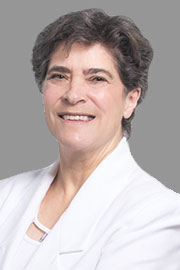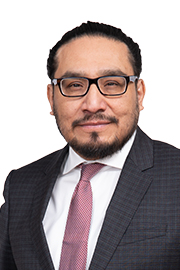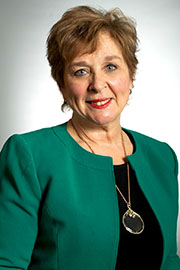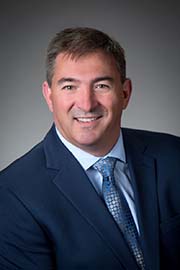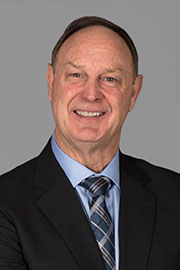- May/10/23 5:00:00 p.m.
I wonder if we could just have a little imaginative exercise. So the Minister of Northern Development mentioned earlier the idea of possibly having a movable Legislature, which I think is a very interesting thought, especially if we don’t think about the cost or the mechanics, but the idea of it. I wonder if we could think also about language. English and French were made as the official languages of Canada as a colonial state. What if we were able to hear Cree, Oji-Cree, Ojibway, Mohawk? How would things have been different if those languages and thought processes had been part, and is there a way we can incorporate that into our future?
- Hear!
- Rabble!
- May/10/23 5:00:00 p.m.
Further question?
- Hear!
- Rabble!
- May/10/23 5:20:00 p.m.
Certainly. Meegwetch for that question. I think it’s always important to listen to people, listen to First Nations. Again, typically, we are not listened to in this place. In this provincial Legislature, Queen’s Park, government, sometimes things are done in a way that makes it look as if they’re doing something without really doing anything. They give us the minimal stuff. That’s not acceptable anymore. You cannot be 10% colonial. You might as well be 100% colonial. I think it’s important to have some type of Indigenous group that you will be able to engage with, and that you will listen to us.
- Hear!
- Rabble!
- May/10/23 5:20:00 p.m.
Thank you to the member opposite, the member from Kiiwetinoong, for his comments, which I enjoyed listening to. The member mentioned that we don’t see Indigenous peoples reflected here and that we have an opportunity with this legislation to be able to see Indigenous peoples reflected here. I would say that I think we’ve made a little progress on that. We have the Seven Grandfathers—is that what they’re called—and we also have the member from Kiiwetinoong himself here, so some Indigenous people will see some reflection of themselves. What else would you suggest we can do in a reimagined Queen’s Park or Legislative Building?
- Hear!
- Rabble!
- May/10/23 5:20:00 p.m.
A lot of people are going to have a lot of suggestions as to what they would like to see in a redesigned Queen’s Park and in a redesigned legislative precinct. Some people will want various different things, and then those suggestions will have to be vetted and some kind of decisions will have to be made. So I’d like to invite the member from Kiiwetinoong to give us his idea of what would be the mechanism or the way suggestions would be received and then discussed or vetted and then decisions would be made. If he can give us an idea of what he thinks about that.
- Hear!
- Rabble!
- May/10/23 5:20:00 p.m.
I appreciated being here and listening to your remarks. I have so many thoughts. I’m going to try and distill it down. One of the things that you had said was about making this place more real, telling the real history of Canada, and I think history is a big part of when we look around this place. It is a big part of the story, but I also think that the future and the next chapter is an important part, because it’s one thing to say that everyone is welcome here, but that feels very polite. That we open the doors and say, “You are allowed in,” that’s about permission and manners. It’s a very different thing to say that people belong here. How can we approach this process to ensure that more people belong in this space?
- Hear!
- Rabble!
- May/10/23 5:20:00 p.m.
Questions?
- Hear!
- Rabble!
- May/10/23 5:30:00 p.m.
Thank you for your presentation. I’m wondering, really, if we were observing the Seven Grandfather Teachings, what it would look like in the decision-making process. We had a decision made today about a mining bill, and it was objected to by the nine First Nations of Matawa, by the Chiefs of Ontario, 131 First Nations, by members of Treaty 9 and Whitesand—
- Hear!
- Rabble!
- May/10/23 5:30:00 p.m.
I think it’s important to acknowledge some of the things that we see—the paintings. I go to some offices and when I try to get Indigenous art or woodland art in my office, most of it is taken, and it’s taken by other MPPs, it’s taken by other offices. Reconciliation is not having woodland art in your community. That’s not reconciliation. We need to be better than that. But I think it’s important to, again, commission and install—publicly accessible, highly visible—a residential school monument on the grounds. Meegwetch.
I think we would be able to move forward in a good way together as a—not First Nations, not as parties, those party lines that sometimes we don’t agree upon. I think we would be able to move things further, to have better communities, to have a better province, but also a better Canada. Most importantly, I think if we work together—we always want the same thing, and that’s to have a better society. Meegwetch.
I think it’s important, again, to acknowledge some of the historical practices, the historical things that have been done to, again, First Nations. And if it was up to me, if I had the translator in the box that could speak my language, I would really like that.
- Hear!
- Rabble!
- May/10/23 5:30:00 p.m.
I look at the timer here; I’ve got 20 minutes, and I turn and I look at the clock, and it is 25 to 6. So I guess I’m the last batter of the day, because when we throw in the questions, it will take us past 6 o’clock.
I’ve listened to a lot of the speeches today on this. I’ve listened to a lot of the conversation on it. I’ve had lots of conversations with people about it. Typically, when I come in to do a speech, I have a number of things I want to talk about, and then, as I listen to other people talk, I change my mind on what I’m going to say. I don’t want to repeat things that others have talked about. So this is going to be a very meandering and wandering type of speech, and I’m actually curious to see where I’m going to go with it myself.
When we look back at the history here, though—and I’ve done a fair bit of research on the history of it. I find it interesting that in 1850—that’s when the first cornerstone was actually laid for the first building that was here—the original property was leased. This is one I think is really interesting, because when you look at what that lease was—
And then the building was built. The first Legislature that people sat in here was in 1893. When you look at the building itself, the grandeur of the building, when you look at the carvings that have been put in here, the structure of it, it truly is an amazing monument. But as we all know, when you have an older building and you need to make renovations to it, it’s something that’s going to be costly. You know that it’s something that’s going to take a significant amount of time, and unfortunately, there is nobody alive today that was alive when this building was being built. So when we open up the walls, there are going to be things that we’re going to find that we have no idea were there that we’re going to have to address.
I’ve owned a number of homes, and I’ve renovated pretty much every home I’ve had. I tend to buy a home that is very dilapidated, and I gut it, and we build it back the way I want—well, actually, honestly, we build it back the way my wife tells me she wants it, but I pretend that it’s the way I want it as well, because it makes her happy if she thinks that I like what she’s suggesting to it. The last three homes that I’ve done that with, we have found things in the walls that when the home was built someone purposely put in there as a time capsule. Sometimes I think it was by mistake, because we found a T4 slip in the wall of the house I’m currently in. It was from 1981. I don’t think they really meant to leave their T4, but it was interesting to see what they made in 1981 as a school principal. We found notes in the walls of some of the houses. We found dead mice, or the remains of dead mice. There are a lot of different things that you will find, and when we take these walls down, I fully expect that we’re going to find some time capsules that the craftspeople left behind because they could.
One of the things when I was first elected that I thought was really interesting—we all get a tour of Queen’s Park, and we hear some of the history on it. In certain areas, there are faces that are carved into the walls. When we look across, there are two of them of Queen Victoria. One of them is a very good representation of Queen Victoria; the other one, I’m told it was during a labour strike, and she kind of looks more like a jack-o’-lantern than she does the Queen. I’m wondering whether or not that was put up that way as a protest because of a labour strike.
The craftspeople weren’t able to put their names on anything. Someone who is a painter will put their name at the bottom of a painting, but those who did the woodcarvings couldn’t, and what we’ve been told is that most of the images that have been carved into the walls—the angels that are there—were either self-portraits or portraits of their family members. And that’s something that I think is very valuable to keep.
When we do the demo—it’s been talked about already; the member from Timiskaming–Cochrane talked about that, that it’s not like you can come in with a sledgehammer and just tear everything out and start afresh. There is some significant history that is in this building that is going to need to be saved. All of the woodcarvings are going to need to be saved. Another member talked about the ceiling and, in 1996, when they started to do that renovation and they took the white off, they found that there were actually still paintings on the ceiling. It would be a shame to lose that history. I don’t know how they’re going to take those down without doing some kind of damage to it, but I’m sure that we’ll bring in some craftspeople that will do their very best to preserve as much of that as possible.
The member from Etobicoke–Lakeshore talked about the amount of cables that are here and some of the challenges with WiFi throughout the building. But I want to point out, they had wireless technology when this building opened in 1893. Now, I’m sure all of you are looking at me like, “Are you off your rocker? They didn’t have wireless technology.” The lights in here were not electric. The four main lights were lowered and they would light the candles in the kerosene lamps that were in it and then they were raised back up. That’s wireless technology from 1893. That is something that I hope we don’t lose, the grandeur of these. When they made the renovations way back when, they were able to preserve the look and feel of it and put in electric lighting. And then the secondary lights that were added when television cameras were put in here, because it wasn’t bright enough for it, it was done in a way that makes it look like it was part of the original design of this building. My hope is that as we go through the renovations, we make sure that we preserve as much of that as possible because it truly is a grand building. It truly is a work of art.
Now, I recognize that there are a lot of things that we can do moving forward to make sure that we are accommodating what new technologies are. One of the things I did want to talk in particular about in the bill is the Legislative Protective Service. I want to put a slightly different perspective on it, and I’m going to touch on some personal things for me. The Legislative Protective Service, they are here in the precinct, but they don’t have peace officer abilities outside of the precinct. It’s been said a couple of times by other members that having the Legislative Protective Service able to do things at your constituency office or outside of the precinct, being recognized as peace officers that way, is something that would be very valuable, because all of us rely on our local police forces for it. And there are people, I’m sure, who are saying, “Why do you need to do that? Why do you have to have extra policing capabilities on it?” And this is where I’m going to get into a couple of minutes of my own personal experiences.
I was first elected in 2018. I came into being an elected official with certain expectations on it. I am a 53-year-old straight white male. There is no demographic in North America that is more privileged than the demographic that I come from. I have had death threats. I have had threats to be kidnapped and tortured. My staff have had death threats. My home has been graffitied. The wheel nuts on my truck were loosened and I had a wheel come off while driving. I know it was not because we did something wrong with the car, because the tires had been changed 12,000 kilometres earlier, five months earlier. If the tire was going to come off because we hadn’t put the lug nuts on tight enough, it would have come off in the first couple of hundred kilometres. We know who did it; we can’t prove it.
As I said, I’m a 53-year-old straight white male. There is not a more privileged demographic in our society than what I am. I’ve had voice mail messages. My wife works at the police department and she has had threatening voice mail messages left at the police department. They blocked their phone so that they couldn’t get through.
So why do we need to have the Legislative Protective Service have these extra powers outside of the precinct? Because if someone like me can have that happen to them, imagine what can happen to any other member who is not 6 foot 3 and 260 pounds and from that demographic. That’s why we need to be looking at some of those things.
There are some changes in here to FIPPA, to freedom of information. I’ve had people reach out to my office about that and ask why; what are we trying to hide? Well, there are certain security things that are going to have to be put in place in this building, that will have to be constructed into the building, and you don’t want someone to be able to do a quick Google search and find out what the security system is here at Queen’s Park, because we live in a different place today than we did just six years ago, when I first thought about entering politics. Not releasing the security information about this building makes perfect sense, and that’s why we’re doing some of those things, because we don’t want to find ourselves in a position where someone can circumvent it.
Now, I’m not suggesting that we’re going to have some person come in and try to attack us all, but we know that with cybersecurity, we are constantly under attack from hackers who want to try to break into the system, who want to try to take down the government computer systems. So having the ability to not release that makes perfect sense. It’s not necessarily for the security of us as members, but it’s for all of Ontario, to make sure that their government can still function appropriately. As I said, I had some constituents reach out to my office about that and question why we were doing something like that.
Going back to the physical aspects of the building, though, there are a number of things that we’ll have to look at, that we’ll have to have more consultation on. I’ve talked about the fact that the building opened in 1893. Really, when you look at how this building has served the people of Ontario, how this building has served those who have been elected, those who have been working here with the government, they did a fantastic job—they truly did—when they designed it, because it has served the people of this province for 130 years. There really aren’t a lot of things that you can say have only had minor tweaks to them over 130 years and are still functioning very, very well, but this grand building is one of those things that, for 130 years, has served the people very well.
But it’s time. It’s time to take it back to the studs, bring it down to bare bones, and then build it back up again, so that we can have it functioning for us for the next hundred-plus years. No one in 1893 ever anticipated that we were going to have computer equipment. They didn’t have electric lights in this room, so electricity wasn’t even something that they had considered. Fibre optics is how we send data now, but is fibre optics going to be the way that we do it a hundred years from now? I can’t tell you that.
I went to university. My first year was in 1989. My one computer prof talked about five-and-a-half-inch floppies and how we would never—five-and-a-quarter-inch floppies and three-and-a-half-inch floppies; sorry—leave the five-and-a-quarter, that people wouldn’t adopt the three-and-a-half because all of IBM’s technology was based on five-and-a-quarter. Well, that lasted for about a year, and then we were into the three-and-a-halfs, then we had Zip drives and we had a whole bunch of other technologies that replaced it. So to be arrogant enough to say that we’re not going to need a new technology 100 years from now is just ludicrous.
One of the challenges we’re going to have, then, when we rebuild this building is what types of things we’ll put in place to allow for that expansion, for that new technology, when that new technology comes. Yes, we can put conduit all throughout the building so you can run more cables, but perhaps we’re not talking about something being cabled 100 years from now; I don’t know. I’m going to leave it to the design engineers, those guys who are a lot smarter than I am on those types of things, to try to figure out what we’re going to need and give enough flexibility that we can do it.
When you look at the electricity in this building—I don’t know for sure, but I would bet a steak dinner, for anyone who wants to come over to my place for a barbecue, to say that we probably have a whole lot of knob and tube in this building. For those of you who don’t know what knob and tube is, think of an insulator on a wall and you run two tubes with electrical wire through them. There’s no electrical box that your light fits on. It’s just two tubes that come out of the ceiling, and you attach your light to that. I would bet there is a ton of knob and tube in this building.
We use copper piping for running water. This building has lead piping in it for running water.
- Hear!
- Rabble!
- May/10/23 5:30:00 p.m.
Another speaker had made the very good point that, thus far, this physical structure has lasted us over 100 years, and I think that’s a remarkably good record for any physical structure. And going forward, we should perhaps have a physical structure that will last us for the next 100 years without having to decamp, as I will say it. So I would like to ask the member to offer his ideas of how we can have a physical structure going forward that will last another 100 years.
- Hear!
- Rabble!
- May/10/23 5:30:00 p.m.
Further questions?
- Hear!
- Rabble!
- May/10/23 5:30:00 p.m.
That’s good ink on that paper.
- Hear!
- Rabble!
- May/10/23 5:50:00 p.m.
It adds more than flavour to it, that’s for sure.
The standard now is ABS pipe for waste water. What we have here is cast iron, and it’s wrapped with horsehair. When the cast iron breaks, obviously the horsehair gets all wet as well, and it causes a real problem cleaning it up, but it’s in places now where you can’t even get to it.
One of the good parts I’ll say about the age of the building is, we didn’t use asbestos in 1893, so they’re probably not going to find a lot of asbestos when they tear this down, but we don’t know. That’s why it’s going to take close to 10 years for this building to be decanted and then rebuilt. There are so many unknowns when they start taking down the walls, and they have to do it in a way that is going to preserve some of the fantastic, historical artwork that is here.
But it’s not just the physical aspects of the building. There are other things that this building can be used for to represent all of Ontario.
At one of the committee meetings, there was a discussion around art and what art should be here and what should be displayed and what art perhaps shouldn’t be displayed. As the member from Oshawa talked about, there’s some very dark art that’s here. She has said to me a couple of times that one of the pieces of art right beside the member from Sudbury’s office—it’s called The Foreclosure, and you have a farmer who is lying on his deathbed with his family around, and you have the banker foreclosing on the farm because the farmer is too sick to continue on. That is a piece of art that we have here. It’s worth keeping—it’s worth reminding ourselves, because those who don’t learn from history are destined to repeat it.
So, as we put this back together, we have to make sure that we’re putting in all of those things that remind us not only of the good things that have happened in Ontario, but also some of those dark things that have happened in Ontario. As legislators, one of our jobs is to improve the lives of the people we represent, and the only way we can be assured that we are doing those things is by thinking of and recognizing the mistakes that had been made in the past and not repeating those mistakes. So it’s very, very important that as we put the building back together, we’re putting in those types of things that do remind us of not only the good things that have happened in Ontario, but also some of the darker history in Ontario.
Decisions are going to have to be made on all of that, and the only way that we can make that decision appropriately is to make sure that we have the appropriate feedback from everybody.
I did love the one comment that was made by the Minister of Northern Development and Minister of Indigenous Affairs about the possibility of travelling the Legislature, and what I’ll point out is that, in British Columbia, I had the opportunity to go to the BC Legislature, and they actually did that for the 100-year anniversary. They went back to the original city that served as the capital city and they turned the hockey rink into the Legislature for seven days. So it’s been done before in Canada. That would be a great opportunity for us to take, and I would love, more than anything else, to use the 900,000 square feet of GE in Peterborough and bring the Legislature to Peterborough for a week.
If you recall, when the Seven Grandfather Teachings was put up, there was a smudging ceremony that went on. I would love to see something like that at the beginning of each of our sessions, having a smudging ceremony, because it’s cleansing your mind, your eyes, your ears, your nose, your mouth and your heart. If we were to do something like that to incorporate some of those traditions—not just the physical part of it, but actually some of the things that are done as a ceremony for different reasons by different groups across Ontario. I’d love to see something like that incorporated in what we do.
There are different technologies that we have today that can be incorporated into the building of the building of this building—say “building” three times—that allows for flexibility in the future because it’s easy to remove and put back and no one would know that it had been removed. Having that type of flexibility I think is something we should be looking at.
- Hear!
- Rabble!
- May/10/23 5:50:00 p.m.
I appreciated the member’s comments about the idea of the potential of a time capsule. Really, everywhere we look is a time capsule. For those of us with these water things, if you pick it up, underneath that, if you’d like to guess what it’s for, there was a hole there—
Interjection: An inkwell.
As we talk about what comes next, I think of the idea of futureproofing this space and giving opportunity for, whether it’s cables that come in or some other technology that doesn’t involve wires or what have you—I mean, right now we’re overloading power bars, which is dangerous. So what are some thoughtful ways that we could futureproof this in terms of technology or the “guts” of this space, as you said?
- Hear!
- Rabble!
- May/10/23 5:50:00 p.m.
It adds flavour.
- Hear!
- Rabble!
- May/10/23 5:50:00 p.m.
Questions?
Third reading debate deemed adjourned.
Report continues in volume B.
- Hear!
- Rabble!
- May/10/23 5:50:00 p.m.
I’d like to thank the member from Peterborough–Kawartha for his presentation. I listened intently. You mentioned the Gustav Hahn ceiling that was uncovered, as well as all of the carvings that we find here, the Latin—and I believed it happened in the millennium. There’s “Gubernatio bona fructumparit,” which means “Good government bears fruit,” as well as “Pax sit tempus nostrum,” “Peace in our time.” Sometimes we don’t see peace during question period, that’s for sure. But you also mentioned the Seven Grandfather Teachings by Garrett Nahdee. It’s a very small portion of this entire precinct.
The member from Kiiwetinoong recommended a monument to residential school children who were stolen and survivors as well as those who suffered generational trauma. I’d like to know from the member, would you like to see a plan that incorporates Indigenous ways of being, thinking, and make this place culturally safe for Indigenous people?
- Hear!
- Rabble!


